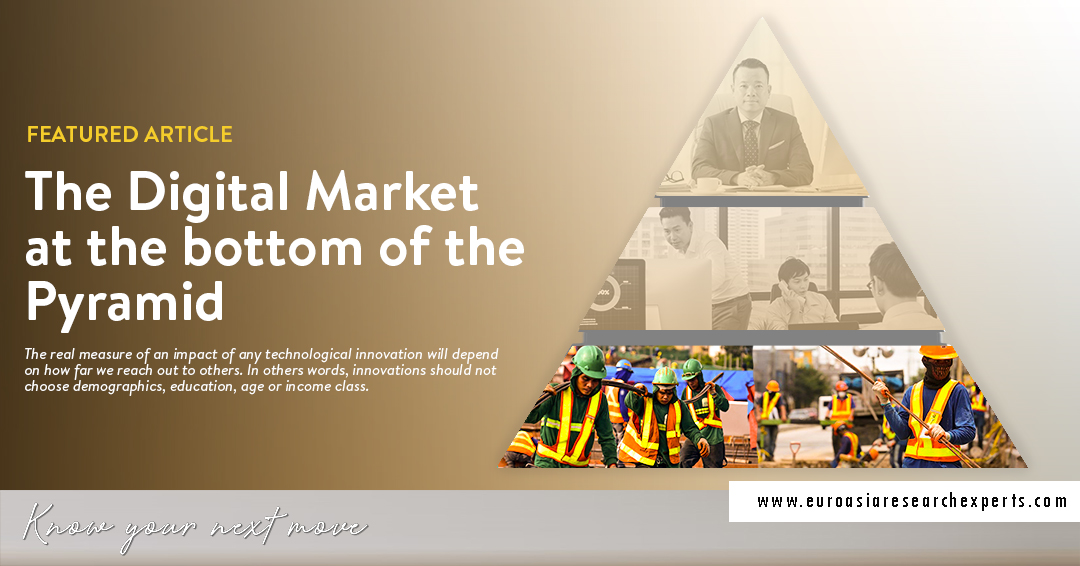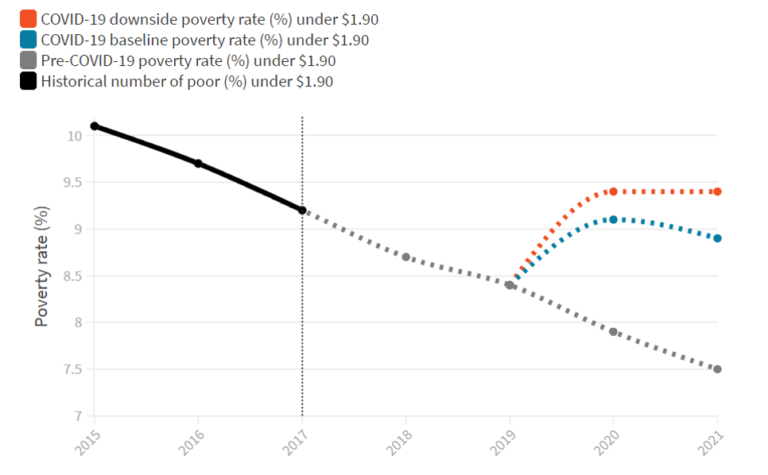
Throughout history, the use of technology has had a significant impact on improving people’s way of life. Humans have been successful in transforming these technologies into innovations – examples are products that promote better health and lifestyle, and processes and services that streamline how we work and how we do things. But the real measure of the impact of any technological innovation will depend on how far we reach out to others. In other words, innovations should not choose demographics, education, age, or income class.
In “The Fortune at the Bottom of the Pyramid” (2007), C. K. Prahalad shared a radical idea combined with substantial research data on alleviating poverty through economic development and social transformation. According to Pralahad, there is an estimated four to five billion people within the global population living with less than USD 2 a day who are at the Bottom of the Pyramid (BOP). Recent data from the World Bank shows that in 2017, an estimated 9.2% of the global population of approximately 689 million people lived in extreme poverty. Last year, the COVID 19 pandemic has increased this number by an estimated 88 – 115 million people (measured through the International Poverty Line of $ 1.90 /day).
Figure 1: The impact of COVID-19 on global extreme poverty

According to studies conducted by Asian Development Bank in 2018, in the Philippines alone, 16.6% of the country’s population, or approximately 17.6 million Filipinos lived below the national poverty line. Additionally, the 2019 data shows that the percentage of the employed population living below $1.90 PPP (purchasing power parity) per day is 2.7%.
Figure 2: Poverty Indicators (Source: Asian Development Bank Statistics April 2020 (adb.org)

This consumer group remains unserved by large businesses possibly due to the lack of strategies on how to reach out to this unique niche market segment or businesses are simply not aware of their potential engagement and loyalty.
Awareness and recognition of the bottom of the economic pyramid and eventually the development of products, processes, and services catering to the “poor” group can potentially lead the way to a new approach in looking at a profitable business. Companies will need a fresh set of eyes and mind to be able to come up with ideas on how they can support this underserved and mostly unbanked population which will impact their lives and for the business to profit in the end.
To help businesses, here are important points of Prahalad’s Twelve Principles of Innovation for the Bottom of the Pyramid which can be used as a guide in creating or investing in technologies for their companies.
Focus on price performance. BOP consumers are looking for products that are affordable and yet come in the full package. With their limited budget, companies should create products and services that are not necessarily cheap but should be value for money with competitive pricing.
Innovate by providing hybrid solutions while blending old and new technology. BOP consumers prefer simplified, useful, and user-friendly innovations. Companies should think of how to transform existing technologies that would meet this market’s needs.
Make it scalable and transportable. In order to reduce cost and maximize sales through high volume, companies should develop products that would cater to the BOP consumers across cultures and languages as well as integrate economies to capitalize and market their products and services across distance and beyond borders.
Reduced resource intensity: eco-friendly products. As BOP Market needs to conserve their resources, companies should find better solutions to come up with products and services encouraging recycling, reduction of waste to create an eco-friendly environment.
Product Design with Functionality from the beginning. The BOP Market would look into practical designs of products and services that would meet their specific needs. Companies should be able to incorporate functionality but also be clear on how their technology will be used by their consumers.
Building process innovations. Standardization of processes combined with proper training can streamline and enhance a better business environment. This in turn can cut down costs and drive additional savings which can be passed on to BOP consumers.
Deskill (services) work. With the application of technology, automation will remove manual tasks and labor-intensive works can be mechanized, automated, and computerized. This could increase output significantly and provide cheaper products. Or companies can invest in technologies that would require fewer skills, therefore, simplifying the process.
Educate customers in product usage. Companies should be able to devise plans and strategies in how to teach their BOP market to be early users to be able to accelerate adoption through customer engagement and tapping influencers.
The product must work in a hostile environment. The environment where the BOP market is different so the overall package of a product should be considered as less sophisticated and should withstand noise, dust, unsanitary conditions, abuse, electric blackouts, and water pollution. Companies should be able to test their products for durability and expiration. Another important factor is making sure that customer support is available.
Simplified and adaptable user interface. Technological applications should be diversified and should be developed by companies to cover a wide consumer base. This will encourage user-friendly products which can lead to higher customer retention.
Innovate in Distribution. Companies should invest in technologies that can improve their procurement, distribution, and logistics in different environments such as dispersed rural markets or highly populated urban markets.
Focus on broad architecture to enable quick and easy incorporation of new features. Future add-on features which are added values to the consumers should be considered when investing in technologies and companies need to ensure that these features are easy to incorporate later on.
As companies use Prahalad’s 12 Principles to guide them in developing or investing in products and services, it is also critical for them to ensure that BOP is present in space. In the Philippines, more than half of the total population as of January 2020 were internet users (statista.com). But according to Bangko Sentral ng Pilipinas latest financial inclusion survey, there is still a wide gap in digital literacy between income brackets. Only 40% of Class E are digitally literate. As companies diversify from offline to online, they can leverage by creating awareness programs and campaigns to transform the BOP into a solid digital market. Converting them as digital consumers is a crucial step in adoption and will therefore play a vital role in any company’s success.
Awareness and recognition of the bottom of the economic pyramid and eventually the development of products, processes, and services catering to the “poor” group can potentially lead the way to a new approach in looking at a profitable business. Companies will need a fresh set of eyes and mind to be able to come up with ideas on how they can support this underserved and mostly unbanked population which will impact their lives and for the business to profit in the end.
With the massive adoption of mobile technology, companies should create strategies to include the Bottom of the Pyramid in their target customers. This population should be viewed as an important, growing, as well as a viable, and profitable market. The BOPs can afford to buy unique, low cost but good quality and sustainable products and services mostly in cash and can be potential loyal customers. And as we move further to a more digital economy, companies can benefit from paying attention and supporting the needs of the Bottom of the Pyramid by incorporating.